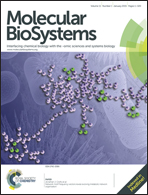Evolution of the CRISPR-Cas adaptive immunity systems in prokaryotes: models and observations on virus–host coevolution
Abstract
CRISPR-Cas is an adaptive immunity system in prokaryotes that functions via a unique mechanism which involves incorporation of foreign DNA fragments into CRISPR arrays and subsequent utilization of transcripts of these inserts (known as spacers) as guide RNAs to cleave the cognate selfish element genome. Multiple attempts have been undertaken to explore the coevolution of viruses and microbial hosts carrying CRISPR-Cas using mathematical models that employ either systems of differential equations or an agent-based approach, or combinations thereof. Analysis of these models reveals highly complex co-evolutionary dynamics that ensues from the combination of the heritability of the CRISPR-mediated adaptive immunity with the existence of different degrees of immunity depending on the number of cognate spacers and the cost of carrying a CRISPR-Cas locus. Depending on the details of the models, a variety of testable, sometimes conflicting predictions have been made on the dependence of the degree of immunity and the benefit of maintaining CRISPR-Cas on the abundance and diversity of hosts and viruses. Some of these predictions have already been directly validated experimentally. In particular, both the reality of the virus–host arms race, with viruses escaping resistance and hosts reacquiring it through the capture of new spacers, and the fitness cost of CRISPR-Cas due to the curtailment of beneficial HGT have been reproduced in the laboratory. However, to test the predictions of the models more specifically, detailed studies of coevolving populations of microbes and viruses both in nature and in the laboratory are essential. Such analyses are expected to yield disagreements with the predictions of the current, oversimplified models and to trigger a new round of theoretical developments.


 Please wait while we load your content...
Please wait while we load your content...